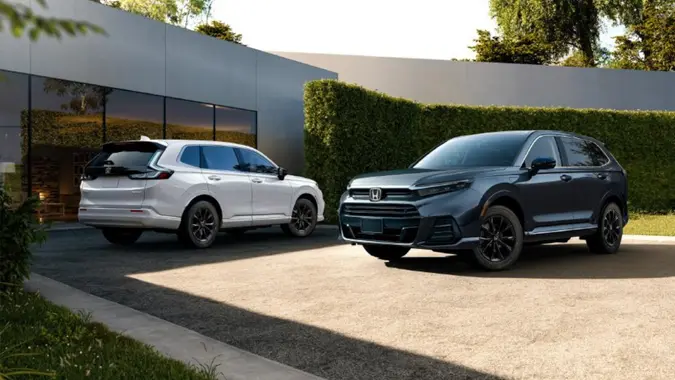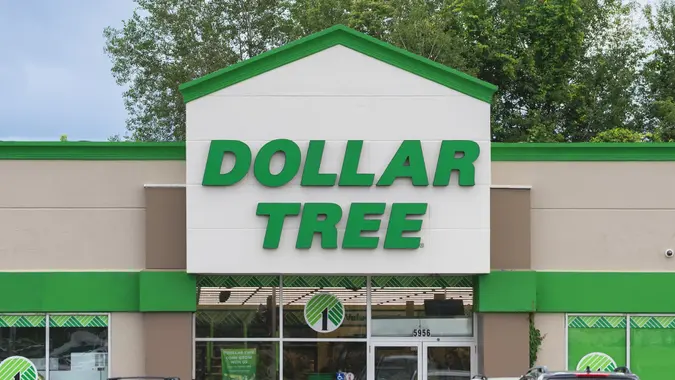Auto Loan Defaults Are Rising: How To Protect Your Car and Credit

Commitment to Our Readers
GOBankingRates' editorial team is committed to bringing you unbiased reviews and information. We use data-driven methodologies to evaluate financial products and services - our reviews and ratings are not influenced by advertisers. You can read more about our editorial guidelines and our products and services review methodology.

20 Years
Helping You Live Richer

Reviewed
by Experts

Trusted by
Millions of Readers
Auto loan delinquencies and repossessions are climbing fast, according to the Consumer Federation of America, fueled by inflated car prices, long loan terms, higher rates and weakened regulatory oversight.
Missed payments don’t just threaten your vehicle — they can damage your credit, pile on fees and make future borrowing more expensive. The question is how to protect yourself before a late notice becomes a default. Here’s what experts say to do now.
Why Auto Loan Defaults Are on the Rise
Auto loan defaults are influenced by several factors, namely higher car prices, increased interest rates and the overall rising cost of living, according to Corrin Maier, vice president of lending payment protection at TruStage. An internal consumer lending survey of theirs found that the average size of personal auto loans is up more than 20% since 2023, with consumers taking on more debt for their vehicles.
“As a result of all these factors, auto loan defaults are increasing for a wide range of borrowers,” Maier said.
Additionally, the problem is exacerbated by pandemic-era lending practices, she pointed out, such as longer terms, higher interest and peak-value financing, thus loan balances and delinquency rates have nearly doubled since 2020 for those using credit unions.
Be Careful To Avoid Repossession
Maier said she’s heard from credit union leaders that people are voluntarily turning over their cars, worried they can’t make payments. This is a better option than repossession, which impacts your credit score and can create ongoing financial stress.
“This burden makes it harder to rebuild credit, refinance or qualify for affordable loans, and can even affect housing since some landlords check credit reports.”
Be Proactive
Protecting your car and your credit starts with being proactive, Maier said. “Too often, borrowers wait until they’ve already missed payments to look for solutions.”
The best time to act is early, before financial strain turns into delinquency, she insisted. Regularly reviewing your loan terms, payment schedules and outstanding balances can help borrowers stay aware of obligations and avoid surprises. Beyond that, utilizing safeguards can be an effective tool for preventing delinquency.
For example, payment protection insurance is a key thing for consumers to opt into when taking out a loan, she said. “If sudden income loss or emergencies occur, your loan payments are covered or canceled.”
She suggested it can give consumers “extra peace of mind” especially if they’re facing multiple financial stressors.
Avoid Long Repayment Terms
Be very careful with long repayment terms as long as 72 and 82 months, according to Joseph Camberato, CEO at NationalBusinessCapital.com. “You especially want to be careful with these longer terms when you’re buying a car that is five or more years old with high mileage.”
The more mileage you put on a car, the more likely it is to have issues, “but now you are stuck in a repayment term that lasts five to seven years,” he said. He suggested always asking yourself if three, five or seven years down the road, your car still going to be worth what you owe on it.
Stay Aware of Warning Signs
Spotting the warning signs of financial strain early is one of the best ways to keep a missed payment from snowballing into loan delinquency or vehicle repossession, Maier insisted.
“If you are starting to struggle with decisions about which bills you can pay and which you can’t — like a car payment vs. a cellphone bill — it’s time to take action.”
Consider such options as:
- Adding payment protection to an existing auto loan
- Refinancing or modifying loans, if possible
Lease Instead of Buy
Another approach is to avoid buying a car at all, and just taking out a lease, according to Zander Cook, cofounder at Lease End. “I always recommend leasing over buying new because it gives you options. If your car has equity at the end of the lease, you can buy it out … If values drop, you’re not stuck in a loan with negative equity.”
Cook said that leasing also generally comes with a lower monthly payment, which gives families more flexibility if times get tough. “No matter what, consumers should take time to compare options, read reviews, and confirm that the lender or service has a strong track record before committing.”
Seek Transparency
Transparency is key, Cook said. If anything is unclear to a consumer, they should get more information. “Lenders need to stop hiding behind fine print and start presenting loan terms in a way that’s clear and easy to understand.”
Ultimately, consumers win when the system encourages trust, fairness and flexibility, he said.
Make Smart Financial Moves
No matter what, be sure to employ smart, common sense financial moves, including cutting back spending, paying down high-interest debt first and automating bills to avoid late fees.
Most importantly, act early, talk to your lender and keep your terms realistic — the sooner you move, the better your odds of keeping both your car and your credit.
More From GOBankingRates
 Written by
Written by  Edited by
Edited by 

























